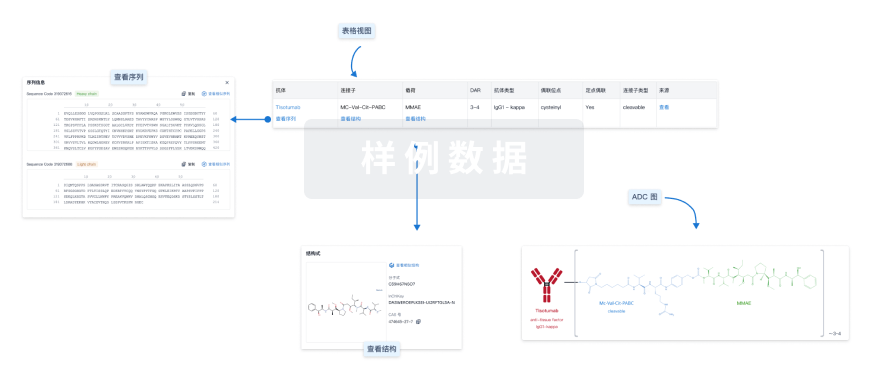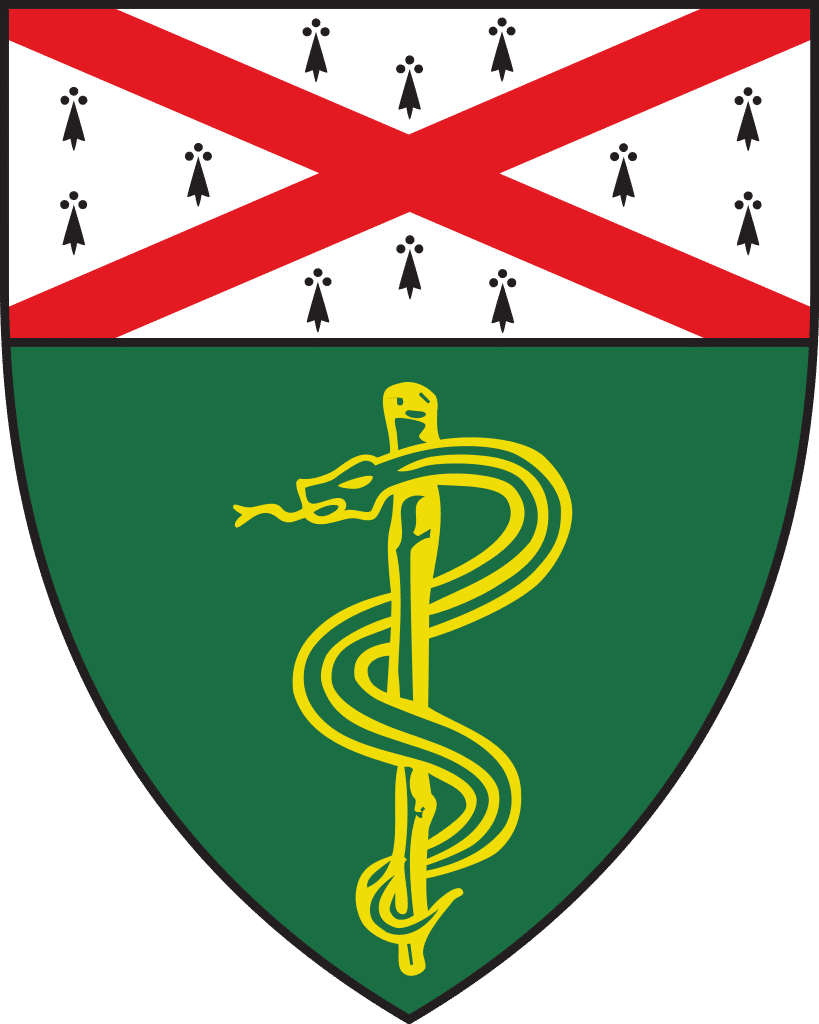预约演示
更新于:2025-08-30
DMP-444
更新于:2025-08-30
概要
基本信息
药物类型 多肽偶联核素、诊断用放射药物 |
别名 RP-444、TC-99M-DMP-444 |
作用方式 拮抗剂、增强剂 |
作用机制 GP IIb/IIIa拮抗剂(糖蛋白 IIb/IIIa拮抗剂)、SPECT(单光子发射计算机断层成像术增强剂) |
治疗领域 |
在研适应症- |
非在研适应症 |
在研机构- |
权益机构- |
最高研发阶段终止临床1期 |
首次获批日期- |
最高研发阶段(中国)- |
特殊审评- |
登录后查看时间轴
结构/序列
使用我们的ADC技术数据为新药研发加速。
登录
或

Sequence Code 124470

关联
100 项与 DMP-444 相关的临床结果
登录后查看更多信息
100 项与 DMP-444 相关的转化医学
登录后查看更多信息
100 项与 DMP-444 相关的专利(医药)
登录后查看更多信息
13
项与 DMP-444 相关的文献(医药)2017-12-14·Investigative ophthalmology & visual science2区 · 医学
Designed Host Defense Peptides for the Treatment of Bacterial Keratitis
2区 · 医学
ArticleOA
作者: Hanlon, Samuel ; McDermott, Alison M. ; Lim, Edward ; Clemens, L. Edward ; Jaynes, Jesse ; Reins, Rose Y. ; Kolar, Satya S. ; Baidouri, Hasna ; Woodburn, Kathryn W.
Purpose:
To limit corneal damage and potential loss of vision, bacterial keratitis must be treated aggressively. Innovation in antimicrobials is required due to the need for empirical treatment and the rapid emergence of bacterial resistance. Designed host defense peptides (dHDPs) are synthetic analogues of naturally occurring HDPs, which provide defense against invading pathogens. This study investigates the use of novel dHDPs for the treatment of bacterial keratitis.
Methods:
The minimum inhibitory concentrations (MICs) were determined for dHDPs on both Gram-positive and -negative bacteria. The minimum biofilm eradication concentrations (MBEC) and in vitro time-kill assays were determined. The most active dHDP, RP444, was evaluated for propensity to induce drug resistance and therapeutic benefit in a murine Pseudomonas aeruginosa keratitis model.
Results:
Designed HDPs were bactericidal with MICs ranging from 2 to >64 μg/mL and MBEC ranging from 6 to 750 μg/mL. In time-kill assays, dHDPs were able to rapidly reduce bacterial counts upon contact with as little as 2 μg/mL. RP444 did not induce resistance after repeated exposure of P. aeruginosa to subinhibitory concentrations. RP444 demonstrated significant efficacy in a murine model of bacterial keratitis as evidenced by a significant dose-dependent decrease in ocular clinical scores, a significantly reduced bacterial load, and substantially decreased inflammatory cell infiltrates.
Conclusions:
Innovative dHDPs demonstrated potent antimicrobial activity, possess a limited potential for development of resistance, and reduced the severity of murine P. aeruginosa keratitis. These studies demonstrate that a novel dHDP may have potential to treat patients with sight-threatening bacterial keratitis.
2011-08-17·Bioconjugate chemistry2区 · 化学
Evaluation of 99mTc-Labeled Cyclic RGD Peptide with a PEG4 Linker for Thrombosis Imaging: Comparison with DMP444
2区 · 化学
Article
作者: Liu, Shuang ; He, Jia ; Zhou, Yang ; Fang, Wei ; Kim, Young-Seung
DMP444 is a (99m)Tc-labeled cyclic RGD peptide, which has been evaluated in preclinical canine deep vein thrombosis (DVT) and pulmonary embolism (PE) models, and in patients with DVT and PE by SPECT (single photon emission computed tomography). Clinical data indicated that DMP444 is useful for imaging DVT, but it had limited utility for imaging PE in patients. To understand its clinical findings, we prepared a new radiotracer P4-DMP444 by replacing the lipophilic 6-aminocaproic acid (CA) in DMP444 with a highly water-soluble PEG(4) (15-amino-4,7,10,13-tetraoxapentadecanoic acid) linker. The objective of this study was to explore the impact of PEG(4) on biological properties (biodistribution, excretion kinetics, and capability to image thrombi) of (99m)Tc radiotracer. We also used canine DVT and PE models to perform imaging studies with/without the heparin pretreatment. These studies were specifically designed to explore the impact of heparin treatment on thrombosis uptake of P4-DMP444. It was found that replacing the CA linker with PEG(4) could enhance the radiotracer clearance kinetics from blood and normal organs in both rats and dogs. The fact that P4-DMP444 and DMP444 share very similar thrombosis uptake in both DVT and PE models suggests that the PEG(4) linker has little effect on GPIIb/IIIa binding affinity of cyclic RGD peptide. Even though P4-DMP444 had less accumulation than DMP444 in the blood, heart, lungs, and muscle over the 2 h study period in both rats and dogs, the difference in PE/lung and DVT/muscle ratios is marginal, suggesting that one PEG(4) linker is not sufficient to dramatically change the contrast between thrombus and background. It is very important to note that the heparin treatment of dogs with DVT and PE resulted in dramatic decrease in accumulation of P4-DMP444 in fresh thrombi. On the basis of these results, we believe that DMP444 and P4-DMP444 are excellent radiotracers for imaging both DVT and PE, and should be used in patients without antithrombosis treatment at the time of imaging.
2004-07-01·Journal of nuclear medicine : official publication, Society of Nuclear Medicine1区 · 医学
Molecular imaging identifies regions with microthromboemboli during primary angioplasty in acute coronary thrombosis.
1区 · 医学
Article
作者: Goodman, Norman C ; Sklenar, Jiri ; Sakuma, Tadamichi ; Kaul, Sanjiv ; Leong-Poi, Howard ; Glover, David K
METHODS:
Fifteen dogs underwent left anterior descending coronary artery (LAD) injury in to produce thrombus, whereas 5 control dogs had LAD ligation. Before recanalization, the risk area (RA) and myocardial blood flow (MBF) were measured, and in vivo thrombus labeling was performed using (99m)Tc-labeled DMP-444. Nine of the 15 LAD injury dogs had occlusive thrombus on angiography and underwent PTCA. MBF measurements were repeated 30 and 60 min after recanalization, and (99m)Tc autoradiography (hot spot imaging) was performed ex vivo to determine the extent and magnitude of MTE.
RESULTS:
The ratio of hot spot size to RA size was higher in the 9 LAD injury dogs with thrombus compared with the 6 dogs with no thrombus (90% +/- 22% vs. 42% +/- 16%; P = 0.005). In control dogs, this ratio was significantly lower (29% +/- 11%; P = 0.05). (99m)Tc activity within the RA was higher in 8 of the 15 coronary injury dogs with AMI compared with those without AMI (1.8 +/- 0.48 vs. 1.24 +/- 0.22; P = 0.02).
CONCLUSION:
MTE can be detected and quantified after primary PTCA. The infarct size is proportional to the magnitude and extent of MTE, indicating that MTE may contribute to the AMI. Thus, in vivo thrombus labeling during reperfusion may provide important information in patients with AMI that may lead to better adjuvant therapy during PTCA.
100 项与 DMP-444 相关的药物交易
登录后查看更多信息
研发状态
10 条进展最快的记录, 后查看更多信息
登录
| 适应症 | 最高研发状态 | 国家/地区 | 公司 | 日期 |
|---|---|---|---|---|
| 静脉血栓形成 | 临床1期 | 美国 | 2000-07-01 |
登录后查看更多信息
临床结果
临床结果
适应症
分期
评价
查看全部结果
| 研究 | 分期 | 人群特征 | 评价人数 | 分组 | 结果 | 评价 | 发布日期 |
|---|
No Data | |||||||
登录后查看更多信息
转化医学
使用我们的转化医学数据加速您的研究。
登录
或

药物交易
使用我们的药物交易数据加速您的研究。
登录
或

核心专利
使用我们的核心专利数据促进您的研究。
登录
或

临床分析
紧跟全球注册中心的最新临床试验。
登录
或

批准
利用最新的监管批准信息加速您的研究。
登录
或

特殊审评
只需点击几下即可了解关键药物信息。
登录
或

生物医药百科问答
全新生物医药AI Agent 覆盖科研全链路,让突破性发现快人一步
立即开始免费试用!
智慧芽新药情报库是智慧芽专为生命科学人士构建的基于AI的创新药情报平台,助您全方位提升您的研发与决策效率。
立即开始数据试用!
智慧芽新药库数据也通过智慧芽数据服务平台,以API或者数据包形式对外开放,助您更加充分利用智慧芽新药情报信息。
生物序列数据库
生物药研发创新
免费使用
化学结构数据库
小分子化药研发创新
免费使用
